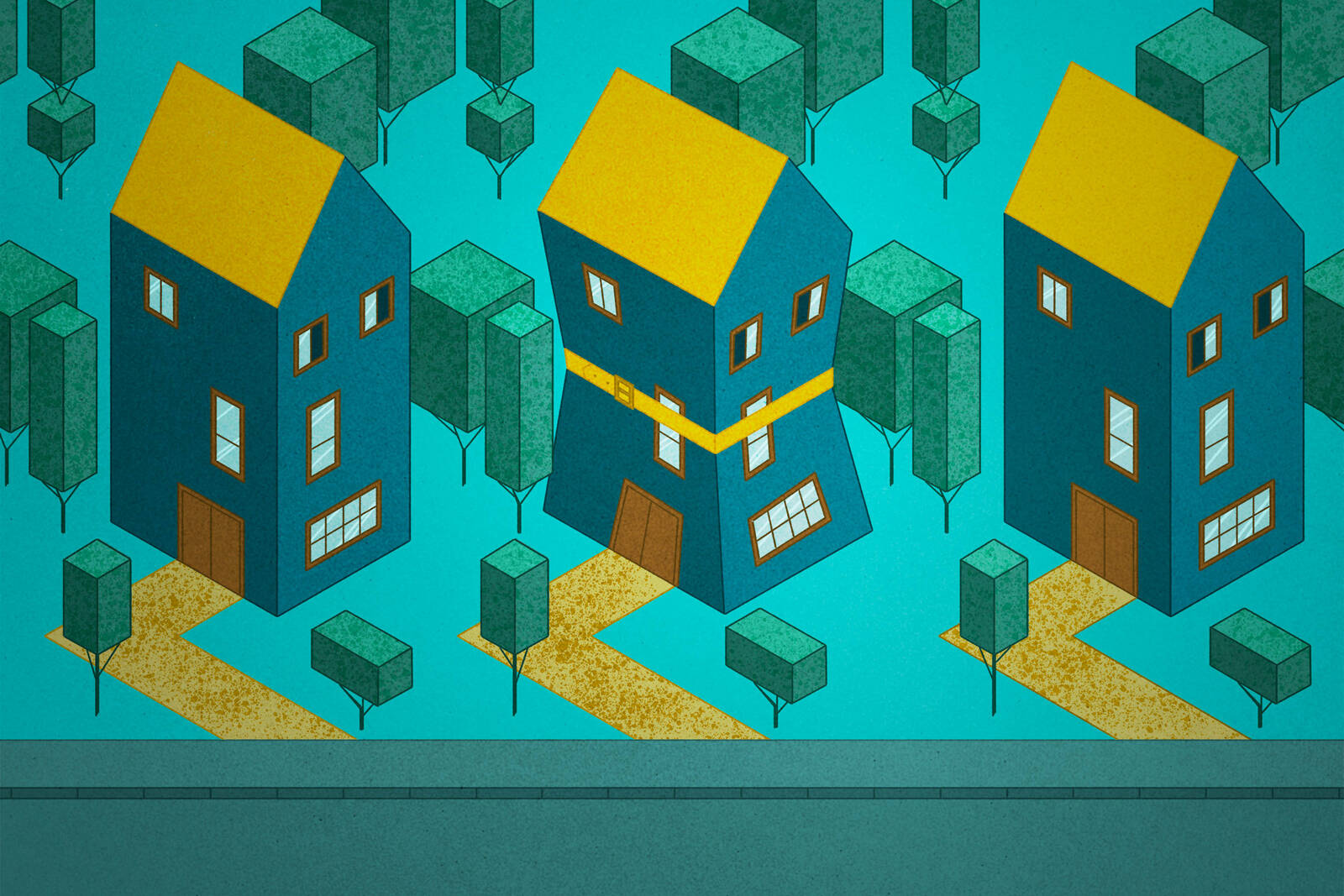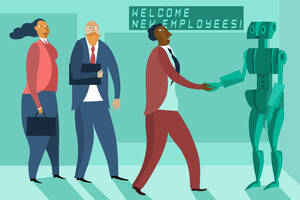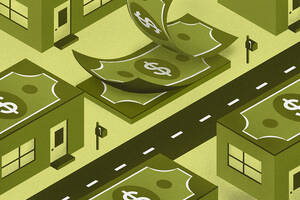Finance & Accounting Economics May 4, 2017
Alaskans Get an Annual Check from the State. How Do They Spend It?
The answer depends on a family’s income, but not in the way many economists expected.

Let’s say the government sent everyone a check for a thousand dollars each year. Would people spend the money immediately or squirrel most of it away? And how does this differ for families with higher versus lower annual incomes?
This is not a hypothetical question. In Alaska, most residents receive annual dividend payments from the state’s Alaska Permanent Fund (APF). The fund, established in the 1970s, generates the money by investing oil-related revenue. While the dividend amount fluctuates from year to year, the media’s forecasts are generally accurate, and the official number is announced shortly before checks are issued each October. For Alaskans, the APF offers a fairly predictable source of extra income.
The state’s unique situation allowed Lorenz Kueng, an assistant professor of finance at the Kellogg School, to test some ideas about consumer spending. Understanding how people respond to a check from the government could help policymakers design more effective economic stimulus programs, which are geared toward infusing the economy with a lot of consumer spending all at once.
Increased spending boosts demand for products and services and can thus affect employment, investments, and interest rates. Yet, if people are squirreling their money away, then the spending boost might not happen.
Kueng found that Alaskans tend to spend a good chunk of their dividend checks quickly—thus providing a clear economic stimulus. But much of that is driven by richer households. The results contradict an assumption among many economists that lower-income people, who have less savings and credit, are more likely to spend the money right away.
“This is one of the oldest questions in empirical economics. It’s at the heart of a lot of the disagreements in the profession.”
Even if it is not coming from the expected demographic, the study suggests that, at least in this particular scenario, these government checks have a large impact on the local economy.
“Every year, higher-income households provide a lot of stimulus to the Alaskan economy,” Kueng says.
Spend or Save?
Kueng’s research addresses the long-debated question of how consumers respond to changes in income. “This is one of the oldest questions in empirical economics,” Kueng says. “It’s at the heart of a lot of the disagreements in the profession.”
In the 1930s, economist John Maynard Keynes suggested that people spent a fairly constant fraction of any money that came their way. For instance, if a person usually spent 30% of his salary and then received a $1,000 bonus, he would spend about $300 of that payment.
A couple decades later, economist Milton Friedman argued that consumers were more forward-looking. Instead of spending extra income right away, they would try to smooth out spending over a longer time period. This idea is called the “permanent income hypothesis.” The hypothesis also contends that consumers start spending extra when they learn that their long-term income may increase, which can happen before they actually receive that money.
The current consensus lies somewhere between those two theories, Kueng says. Some researchers have reported that people do spend a substantial fraction of economic stimulus payments from the government immediately after receiving them. But this spending is often concentrated among poorer households. So perhaps their behavior could be due to a lack of savings and credit, and not because they were choosing not to be forward-looking. Plus those checks were fairly small—typically a few hundred dollars per household. If the payments were bigger, perhaps consumers would be more rational and spend less of the money.
Enter the APF. The program provides a good test of this latter argument because the checks are quite large, typically about $1,000 to $2,000 per person and about $4,000 for the typical Alaskan household. Another advantage is that Kueng could better separate the effects of the payments from other factors. Spending patterns after a stimulus program might partly reflect the crisis that led to the stimulus in the first place, but the APF dividends are less closely tied to the economy.
Predictable Payments
To gather data, Kueng turned to a personal finance website where people logged spending by linking their credit-card accounts, as well as bank-account deposits, including the dividend checks. He obtained anonymized records on 1,379 Alaskan households from 2010 to 2014; another 2,191 households in Washington state acted as a control group.
Then Kueng examined spending on services, such as health care and entertainment, and so-called “non-durable” items that were likely to be consumed quickly, such as food, alcohol, and clothing. This left out long-lasting “durable” items, such as cars and furniture, which he excluded from the study because it would not be clear whether consumers bought them in response to the checks or if they would have purchased them at some point over the next several years anyway.
He found that on average, Alaskans spent 28% of the dividend check on non-durable items and services within three months of receiving the check. That fraction is comparable to the amount that consumers were reported to spend from the smaller checks issued as part of programs such as the 2001 and 2008 Bush tax rebates.
In addition, Kueng found no evidence that people started spending more in anticipation of the October payments. He did not see an uptick in the summer, when the media started predicting the amount of that year’s dividend, or in September, when the amount was formally announced.
Those results contradict the tenet of the permanent income hypothesis that suggests that consumers change their spending behavior when they receive new information about their income. If that were the case, people with sufficient savings and credit would have increased their spending in the months leading up to the dividend check. What Kueng saw in the data is “clearly going against that,” he says.
Fun Money
However, not all households responded the same way.
Kueng divided them into five groups based on income, with the richest group earning an average of $104,000 per person annually and the poorest an average of $16,000. The wealthiest households spent an average of 61% of the check in the first quarter after receiving it, while those at the bottom of the economic ladder spent only 12%.
At first, Kueng was surprised. But upon further reflection, he realized that households were exhibiting “near-rationality.” People may act slightly irrationally—for instance, spending a windfall all at once instead of saving it—if the consequences are not severe. “They only make mistakes if it doesn’t matter much for them,” he says. In this case, the rich might treat the dividend check like fun money that they spend frivolously once a year.
“They could easily save it or they could easily spend it, and it wouldn’t matter either way,” he says. Lower-income households, on the other hand, might depend so heavily on the extra money that they behave more frugally and save most of the payment for critical expenses that will arise later.
More research is needed to understand the reasons behind the rich households’ behavior, Kueng says. It is possible that the annual dividend has become a social event among Alaskans. Perhaps wealthy people celebrate each year by going out for a fancy meal or shopping together, he speculates. If so, this might not make it the best vehicle for predicting responses to federal economic stimulus payments.
Still, the results cast doubt on simplistic policy recommendations that all stimulus payments should be targeted at lower-income households, he says.
“You’re trying to give it to people that you think are most likely to spend it,” he says. “That’s why they usually tend to target lower-income households.”
In addition, handing out stimulus checks to rich people would be politically unpopular. But he says, “we cannot easily dismiss high-income households as not providing any stimulus.”



